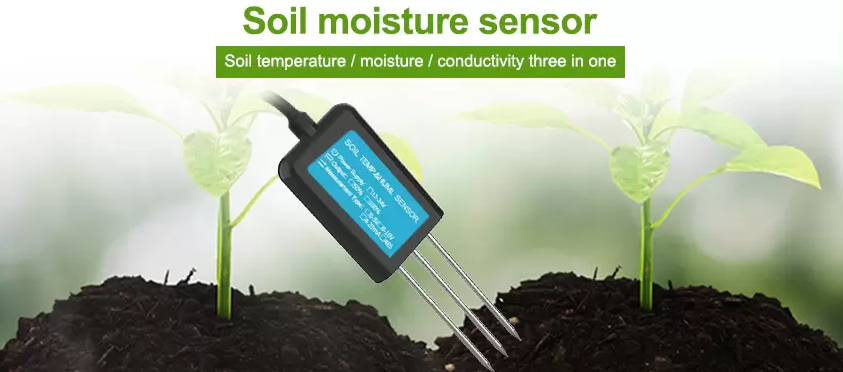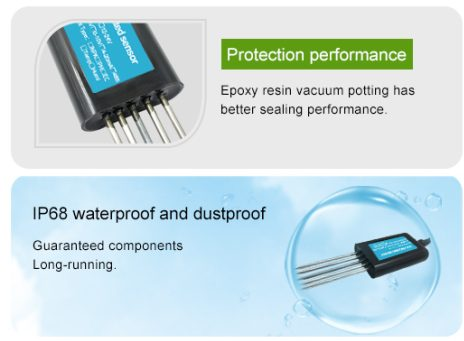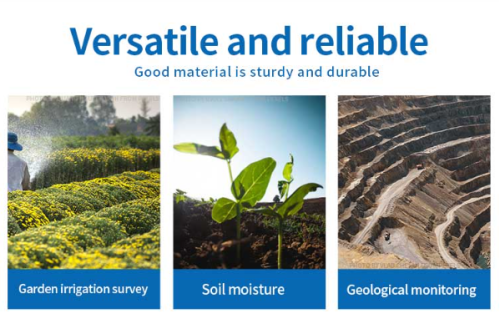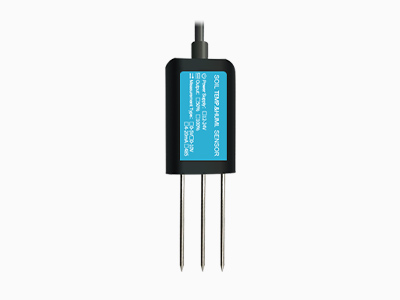Learn about Soil moisture meters

Soil moisture meter play a pivotal role in modern agriculture and environmental sustainability. These devices, designed to measure the water content in soil, provide crucial data for optimizing irrigation practices, enhancing crop productivity, and conserving water resources. This essay explores the significance of soil moisture meters in the context of agriculture, environmental conservation, and the broader implications for sustainable land management.
Understanding Soil Moisture
Soil moisture, often referred to as soil water content, is a vital parameter that influences plant growth, soil health, and ecosystem dynamics. The ability to accurately assess and monitor soil moisture levels is essential for making informed decisions regarding irrigation scheduling, crop selection, and land use planning. Soil moisture meters serve as valuable tools for quantifying the amount of water present in the soil, thereby enabling farmers, land managers, and environmental scientists to assess the overall health and productivity of the land.
Soil moisture meters importance in Agriculture

In the realm of agriculture, soil moisture meter offer substantial benefits for optimizing water usage and maximizing crop yield. By providing real-time data on soil moisture levels, these devices empower farmers to implement precision irrigation strategies, ensuring that crops receive the appropriate amount of water at the right time. This not only contributes to water conservation but also minimizes the risk of overwatering or underwatering, which can have detrimental effects on plant health and agricultural productivity. Furthermore, the data collected from soil moisture meters can be used to tailor irrigation schedules to specific crop requirements, thereby promoting efficient water management practices and sustainable agricultural production.
Environmental Implications

Beyond agriculture, soil moisture meter also have significant implications for environmental conservation and land management. The ability to monitor soil moisture levels in natural ecosystems, such as forests, wetlands, and grasslands, provides valuable insights into the health and resilience of these environments. By understanding the water dynamics within natural habitats, conservationists and land managers can make informed decisions regarding habitat restoration, wildfire risk assessment, and the preservation of biodiversity. Additionally, the data collected from soil moisture meters contributes to a better understanding of the impacts of climate change on soil moisture patterns, enabling scientists and policymakers to develop adaptive strategies for mitigating the effects of changing environmental conditions.
Technological Advancements
Advancements in sensor technology and data analytics have led to the development of advanced soil moisture meter that offer enhanced precision and functionality. Modern soil moisture meters are equipped with wireless connectivity, allowing for real-time data transmission and remote monitoring capabilities. This enables farmers and land managers to access soil moisture data from multiple locations, facilitating comprehensive land management strategies and enabling timely interventions in response to changing soil conditions. Furthermore, the integration of soil moisture data with weather forecasts and predictive modeling tools enhances the predictive capabilities of these devices, enabling stakeholders to anticipate and respond to fluctuations in soil moisture levels with greater accuracy.
Sum up
In conclusion, soil moisture meters play a pivotal role in modern agriculture and environmental sustainability by providing critical insights into soil water content. These devices enable informed decision-making in irrigation management, crop production, and environmental conservation, ultimately contributing to the efficient use of water resources and the resilience of natural ecosystems. As technology continues to advance, the integration of soil moisture meters with data analytics and predictive modeling holds promise for further enhancing the role of these devices in sustainable land management and environmental stewardship.
